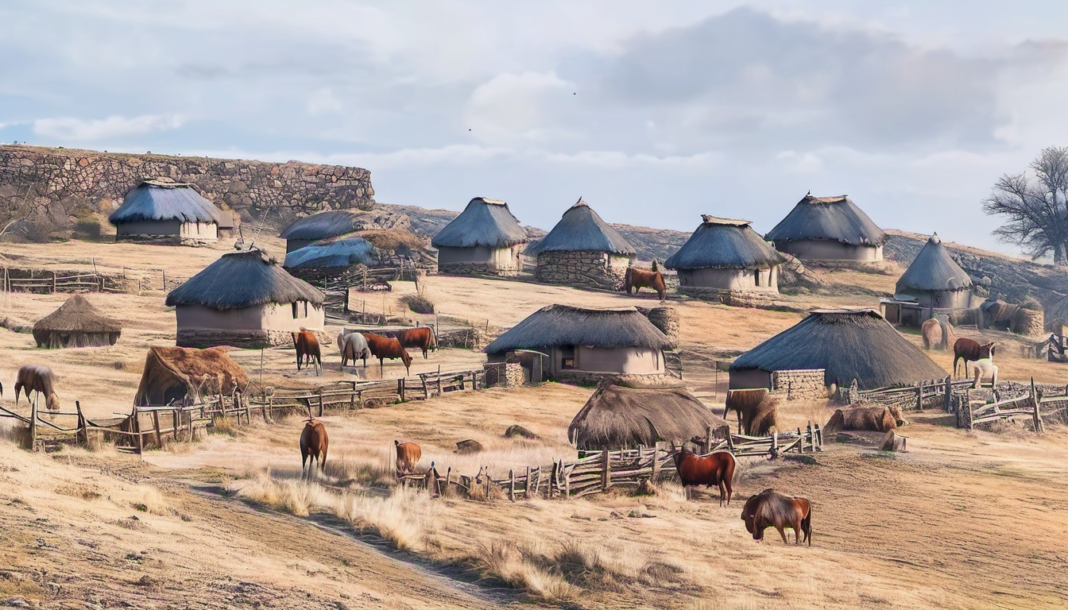Nicole Tau
Lekhetho Makhetha (11) is an avid reader of Sesotho Literature, immersing himself in the adventures of King Moshoeshoe I, the founder of the Kingdom of Lesotho, and relishing in the historical insights inside the narratives.
“It makes me learn more about the Sesotho culture, learn new Sesotho words and feel connected to the characters a lot, such as our first King Moshoeshoe.. I believe Ntate Moshoeshoe was a very kind and peaceful man. He is the best man I know.” Makhetha expressed.
For Makhetha, engaging with Sesotho literature has not been simply about enjoyment; it has been a journey of cultural discovery, historical enlightenment and linguistic refinement. According to him, he no longer mixes Sesotho and English while speaking, not as often as he used to.
Interestingly, Makhetha’s enthusiasm for Sesotho literature embodies the aspirations of many parents, including his own Mother, Lerato Mahlomaholo, who happens to be a Sesotho teacher herself.
Understanding the influential role of teachers in shaping children’s perspectives, Mahlomaholo is happy that her son is embracing Sesotho culture and heritage through Sesotho literature, without the need of parental lectures which often fall on deaf ears.
“As a Sesotho teacher, I have books at home… I did not have to teach him to read and write in Sesotho correctly. I only sometimes correct his minor speech mistakes, because he acquires most of his Sesotho vocabulary from reading Sesotho books,” Mahlomaholo said.
A book that speaks in one’s mother tongue, connects with its readers on a level deeper than any other. Its characters resonate with familiarity, evoking images of neighbours, family members, friends or even a stranger that you have not met in real life, but you already feel like you know, you recognise, because they remind you of home.
And so language is not just words; it is the heartbeat of culture, shaping our worldview and identities. Within the realm of Sesotho children’s literature, language transcends mere words, as it becomes this glorious ode to heritage and custom.
From the babbling as our first utterances to the profound depths of thought, language serves as our steadfast guide, illuminating the pathways of contemplation.
Basotho may have a conflicted relationship with their language, Sesotho, with some advocating for stronger adherence to their mother tongue at schools and at homes, while others are quite laid back about it, taking pride in their children’s fluent English proficiency at a very young age.
However, when it comes to Sesotho Children’s Literature, it is a truce for the two sides in their shared heartfelt appreciation for some of the most popular Sesotho works, from “Ha Le Fahloe Habeli”, and “Liapole Tsa Khauta” to “Mopheme” and “Lehlohonolo Hase Lebelo” and “Mohalalitoe oa Lithota”.
Amids this literary landscape, emerges Halieo Motanyane, a young luminary in the realm of Sesotho storytelling for children. Motanyane’s work, “Sekolong sa Mpho,” (6-7 years), available in English as well, serves as a buyo, in a sea of English-dominated narratives in Lesotho.
Yet, Motanyane’s journey is but one thread in the seshoeshoe fabric of Sesotho literature, a sign of the enduring power of native language in shaping cultural identity and fostering intellectual growth.
Motanyane’s journey as a Sesotho book author began quite unexpectedly, spurred by a call from Education Business Services in 2019 for Sesotho manuscripts at the primary school level. With determination and passion, she penned two stories, including “Sekolong sa Mpho,” which was chosen to be read in government schools. Encouraged by this initial success, Motanyane embarked on a mission to create more Sesotho stories, guided by her deep-rooted connection to her cultural heritage.
“I write about challenges that all kids go through,” Motanyane explained. “From having a weird spot that others can tease (Letheba la Balimo), to overcoming peer pressure (Sekolong sa Mpho) through parent’s support and learning to say thank you from being given what was rightly yours. Additionally, my stories juices in a lot of fiction and fantasy.”
Inspired by her cultural roots and fueled by a desire to bridge the gap between tradition and modernity, she took off on a mission to create stories that resonate with Basotho children. Through her tales of respect, self-love and personal growth, Motanyane’s narratives reflect the essence of Basotho culture.
The importance of one’s native language in children’s literature cannot be overstated. Research by Fozilov and Abduraxmonova (2022) highlights the pivotal role of mother tongue in shaping cultural identity and fostering cognitive development. Truly, language is not merely a means of communication; it is a mirror that reflects our history, values and worldview.
Morija Museum & Archives, with its rich legacy of printing and publishing, serves as a testament to the enduring beating heart of Sesotho Literature. From the pioneering works of Thomas Mofolo to the contemporary narratives of Nt’seliseng ‘Masechele Khaketla, Morija has been a crucible of creativity, nurturing generations of Basotho storytellers.
Raised by a Canadian mother, but having been fully brought up in Basotho culture and traditions, Motanyane’s stories draw from traditions, customs and values passed down through generations. In “Sekolong sa Mpho,” she explores the importance of ancestral traditions through the eyes of three adventurous boys on Moshoeshoe’s Day.
“Through their childishness and playfulness, they learn the importance of throwing a stone at the tomb, what could implicate their lives should they take more than one stone.It is tradition for Basotho, and it adds value to things that we were not told but we tend to question as we grow up,” Motanyane shared.
However, Motanyane acknowledges the challenges of being a Sesotho book author in an industry often dominated by the English Language.
“It is hard to get Sesotho editors, who can master the art of storytelling, Basotho culture and language at one go,” Motanyane expressed.
Despite these obstacles , Motanyane remains undeterred, relying on elders and community knowledge to enrich her narratives and navigate sensitive cultural topics.
However, she is not alone in her concerns. Many share the belief that there is a lack of resources and opportunities for children to access Sesotho literature.
Lerato as a parent is among those who feel that Sesotho isn’t given the same level of importance as other subjects by students as well as the education system. She emphasizes the need for greater exposure to Sesotho literature and related content.
There seems to be a gap in the availability and promotion of Children’s Sesotho Literature especially in today’s digital age where children are reading less and are more glued to their screens than ever before.
Mahlomaholo advocates for the integration of Sesotho literature into primary school curricula, emphasizing its importance alongside other subjects. She sees this as an opportunity to create Sesitho cartoons and movies, fostering children’s awareness and appreciation for the language.
As we look to the future, the importance of Sesotho Children’s Literature in preserving language and culture cannot be overstated. By embracing the vernacular and engaging with native language texts, Basotho children not only develop vital language skills but also forge a deeper connection to their cultural heritage.
Looking to the future, Motanyane envisions a thriving landscape for Sesotho book publishing and literature in Lesotho. “Starting at the beginning should be best…,”she asserts. “We write books, so many of them… One day we will be able to watch Basotho children’s stories on TV and the future will be just as bright.”




